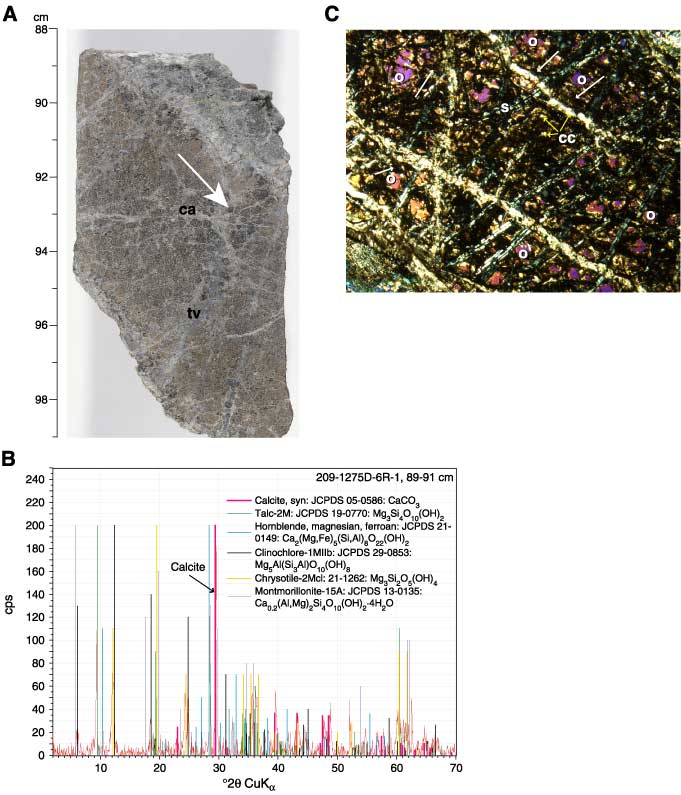
Figure F50. A. Photograph of hand specimen of highly altered troctolite from the upper portion of Hole 1275D. In addition to relatively wide talc-rich veins (tv), there is a fine network of carbonate-rich veinlets (ca) developed in the groundmass. Arrow indicates approximate position of XRD and thin section samples (interval 209-1275D-6R-1, 88–99 cm). B. The X-ray diffractogram shows that the altered troctolite has a complex mineralogical composition including calcite. Arrow indicates approximate position of the sample (Sample 209-1275D-6R-1, 89–91 cm). C. Photomicrograph showing olivine (o) preserved within the kernels of a fine network of calcite (cc, yellow arrows) and serpentine (s) veins. Along the calcite veins, the margins of the relict olivine are replaced by calcite (cc) and very fine grained aggregates of red clay and iron oxyhydroxide (white arrows) (Sample 209-1275D-6R-1, 89–91 cm) (cross-polarized light; field of view = 2.75 mm; image 1275D_019).



![]()